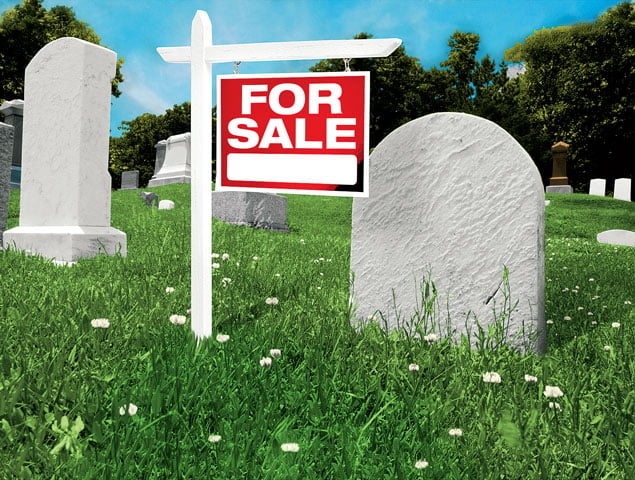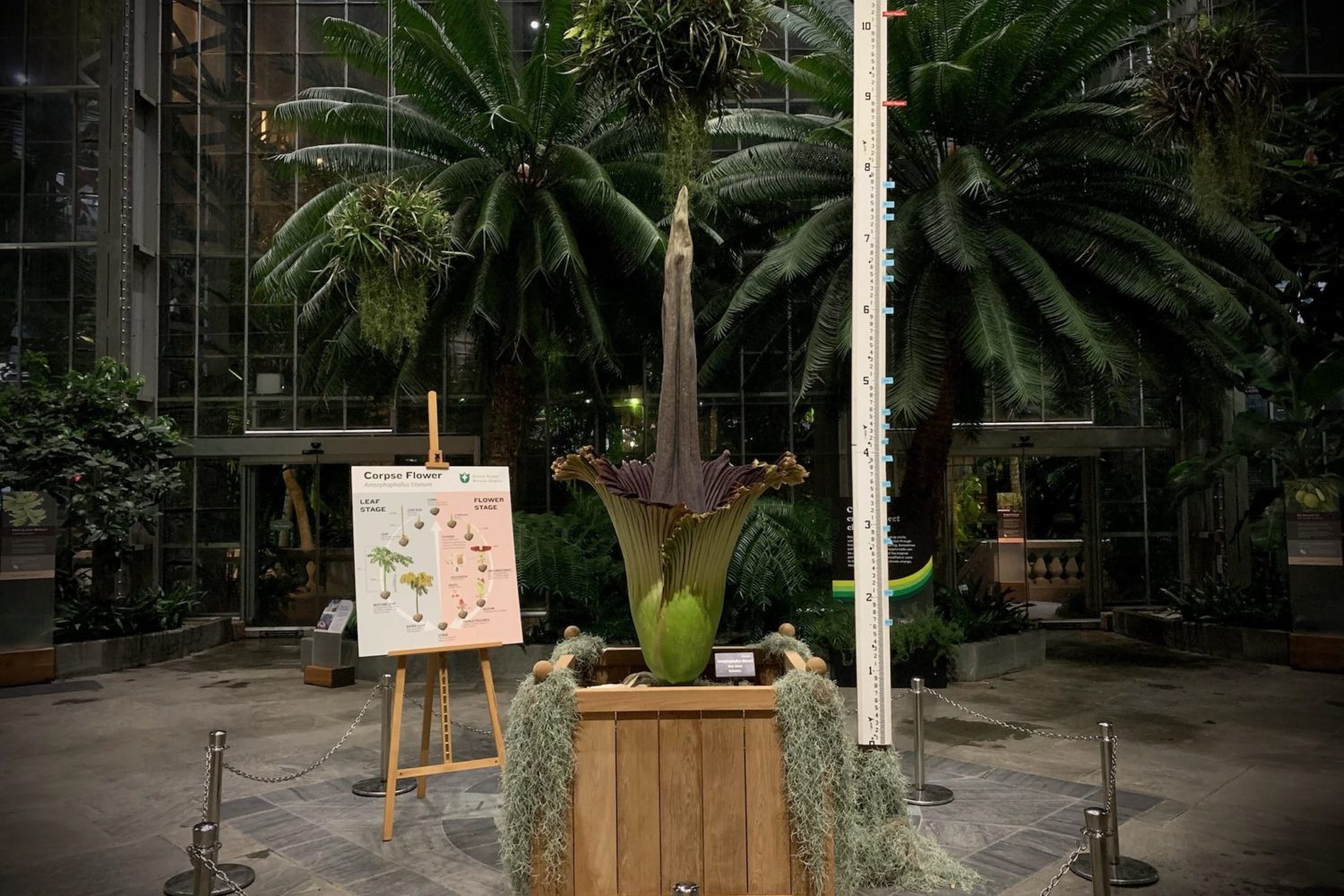Like most fans of home makeover shows, I know how to sell a house. Declutter every room. Paint the walls soothing neutrals. Stage the place to look stylish. But flipping a cemetery plot? Totally alien turf with no reality stars to guide me.
Decades ago, as my mother lay dying far too young, my father bought four gravesites at King David Memorial Gardens in Falls Church: two for Mommy and himself, two for their young children. He was too grief-stricken or cash-strapped to consider that someday we kids would start our own families, move far away, or have no desire to spend eternity underground in the Confederacy, all of which pretty much happened.
Since his death eight years ago at age 100, I’ve pondered various necro-marketing strategies to sell his “interment rights,” even as burial has trended downward. In 1985, only 15 percent of Americans chose to become heaps of ash, according to the Cremation Association of North America. By 2015, the number will nearly triple.
Daddy’s no-frills exit cost close to $6,000, including the flat bronze plaque that preserves the unbroken verdant lawnscape in this sectarian expanse within National Memorial Park. Cremation would have cost around $2,000, but frugality was not the point. Although my father had long ago abandoned the orthodoxy of his boyhood, he’d lost most of his family in the Holocaust and absolutely would not commit himself to an oven, which would have violated Judaism’s prohibition against corporeal defilement. He’d lie intact alongside his beloved wife.
Like many cemeteries, King David doesn’t buy back gravesites. So it was vital that I tout them as part of the greater memorial park’s serene community of Jews, Catholics, Protestants, Hindus, Muslims, Buddhists, even animal companions. (Noah’s Ark Pet Cemetery abuts King David.)
I’d mention the neighbors: a baseball fan over whose grave a New York Yankees flag often flutters, legendary NBA coach Red Auerbach, businessman Herbert Haft, whose mausoleum’s peaked roof reminds me of his trademark silver pompadour.
Upon discovering that putting all that in an ad would cost a fortune, I instead offered Spaces 3 and 4 in Block 24, Lot 153, at deep discount in three lines in the Washington Post. Nobody called. Ditto my Washington Jewish Week classified.
I explored new media. A GraveSolutions.com ad starts at $59 annually plus sales commission. The quickest turnaround was two hours, the longest 12 years, says website founder Ken Brant. FinalArrangementsNetwork.com’s Bob Ward favors a one-time $119.95 payment. Craigslist, which is free, sometimes features gravesites under “housing.”
Here are a few things I’d like potential buyers to know: My parents were kind, hard-working immigrants who loved the America that took them in not long before Hitler marched across Europe. Mommy died in late summer, so we always visited her around the High Holidays in autumn. One year when Daddy was in his nineties and neither of us was thinking straight, we arrived to find locked gates. It was Saturday, the Sabbath, when observant Jews are expected in synagogues, not cemeteries. A groundskeeper offered a Solomonic solution: Drive into Noah’s Ark, which was open, and follow that road to King David.
Three days before my wedding, I went to commune with the mother I’d lost when I was 12. In my prenup frenzy, I’d forgotten flowers, so I picked whatever was growing outside the entrance: goldenrod, honeysuckle, Queen Anne’s lace. When I reached her plot, I found lush roses already in the vase. From my father. Between sobs, I wove all the disparate blossoms into a pair of nosegays—one to remain with her, the other for my chuppah.
In short, it is a place of eternal love.
Annie Groer, a former Washington Post and Politics Daily reporter and columnist, is at work on a memoir.
This article appears in the July 2013 issue of The Washingtonian.


















